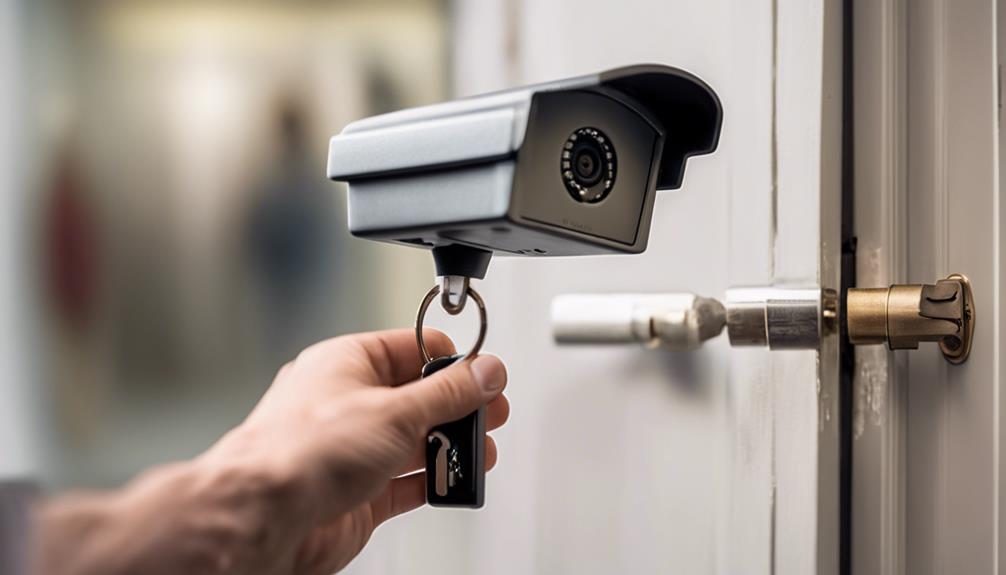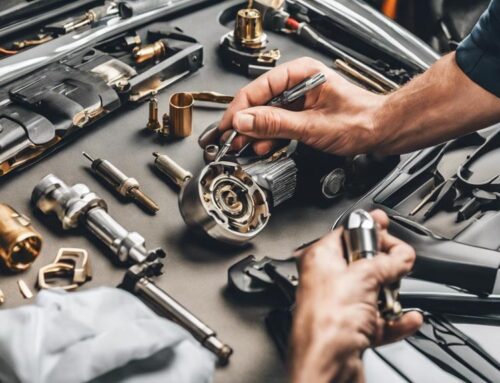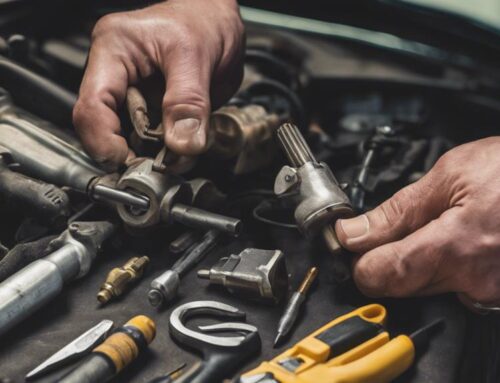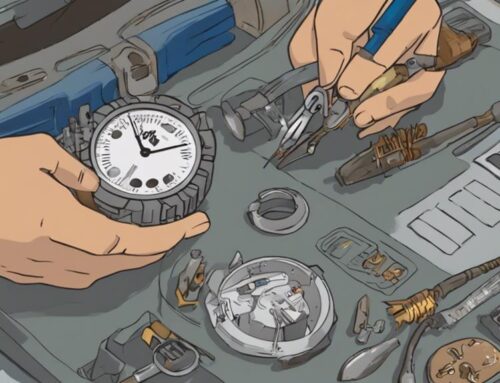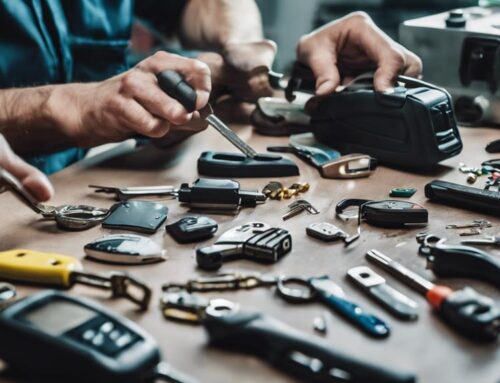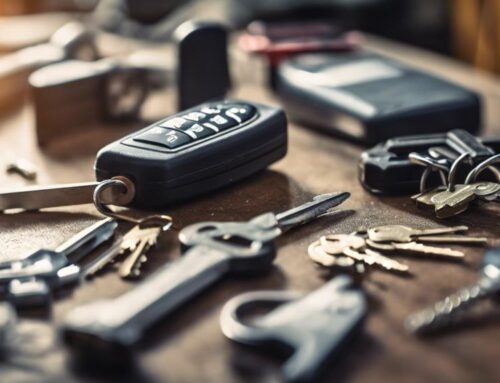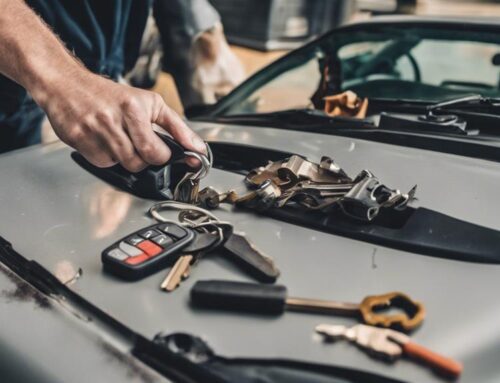A bump key, also known as a 999 key, is a tool used to open pin-tumbler locks through a method that aligns the lock pins at the shear line, allowing the lock cylinder to turn freely. You can protect your home from bump keys by upgrading to bump-resistant or high-security locks, which are designed to withstand such intrusions. Consider using locks from less common brands, as they might offer unique mechanisms that aren’t easily overcome by standard bump keys. Additionally, enhance your overall security with regular lock maintenance and by integrating other security measures, such as surveillance systems. With these strategies, you’ll secure your premises more effectively.
Understanding Bump Keys
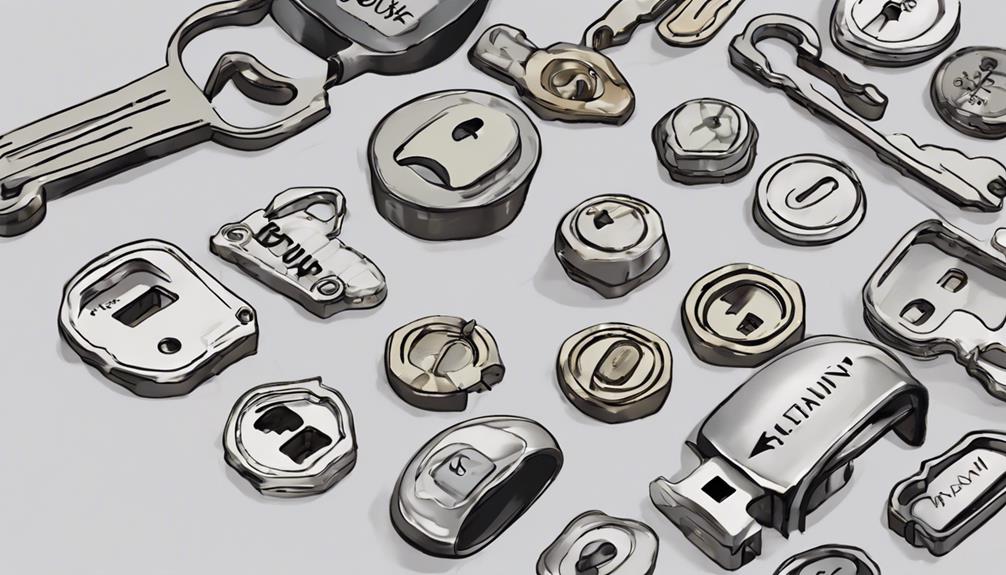
Bump keys, often called 999 keys due to their deeply cut ridges, quickly manipulate the pins in pin-tumbler locks to allow unauthorized entry. You might think of them as the skeleton key’s naughty cousin who’s really into lock-picking. These keys, made in under five minutes, are like magic wands for burglars, giving them a free pass into what was supposed to be your secure fortress. So, how do you keep these mischievous little tools from spoiling your peace of mind? Upgrading your security system to include bump-resistant locks might just be the way to go. These locks are like the bouncers of the lock world, turning away uninvited guests at the door. Keep those pesky bump keys out and elevate your lock game!
How Bump Keys Work
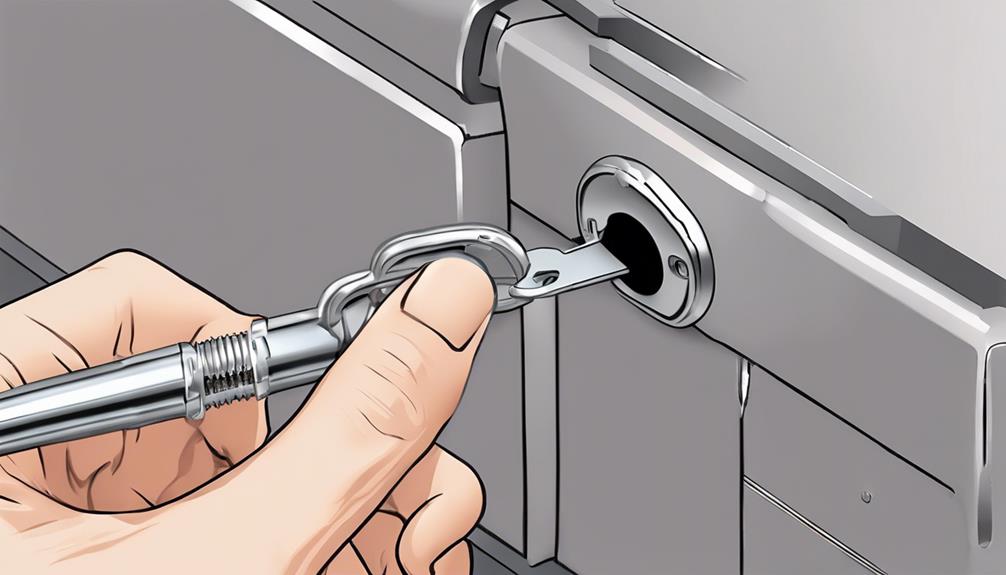
Now that you understand what bump keys are, let’s explore how they manipulate lock mechanisms to gain entry. Picture yourself trying to pick a lock, but instead of being sneaky, you’re just bluntly knocking on the door’s “innards”. When you insert a bump key into a cylinder lock, it’s like you’re lining up all the key pins just right, only to give them a quick, sharp tap. This tap sends a shockwave that aligns the pins with the shear line, allowing the cylinder to turn freely as if the correct key was used.
| Step | Action | Result |
|---|---|---|
| Insert | Bump key into lock | Aligns key pins near shear line |
| Strike | Hit end of bump key | Transfers energy to key pins |
| Turn | Rotate the bump key | Cylinder turns, door opens |
To avoid forced entry, consider upgrading to bump-resistant locks, which are tougher nuts for bump keys to crack!
Common Vulnerable Locks
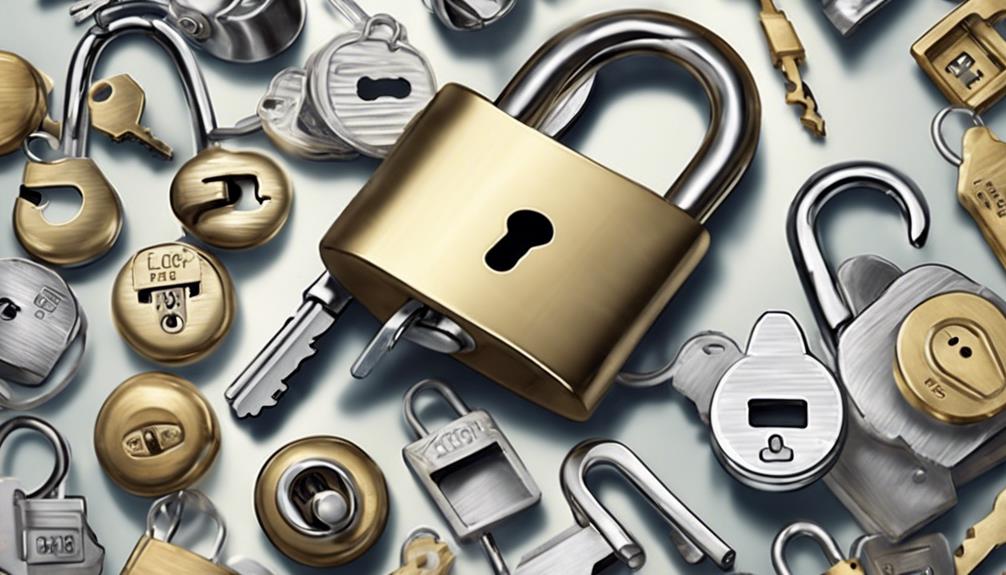
Many exterior door locks, especially those featuring cylinder mechanisms, are particularly susceptible to attacks by bump keys. Your garden-variety pin tumbler locks, the darlings of lock manufacturers, are like candy stores for bump keys. These vulnerable locks just can’t resist the sweet talking of a well-crafted bump key. The bump key waltzes right in, lifts the pin stacks, and—voila!—creates a perfect shear line, opening your door faster than you can say “Who’s there?”
Now, those common brands you trust might just be setting you up for a surprise party with unwanted guests. If you’re keen on avoiding such shindigs, it might be time to upgrade to high-security locks. Don’t wait until the bump key boogie becomes your nightly lullaby!
Effective Protection Strategies
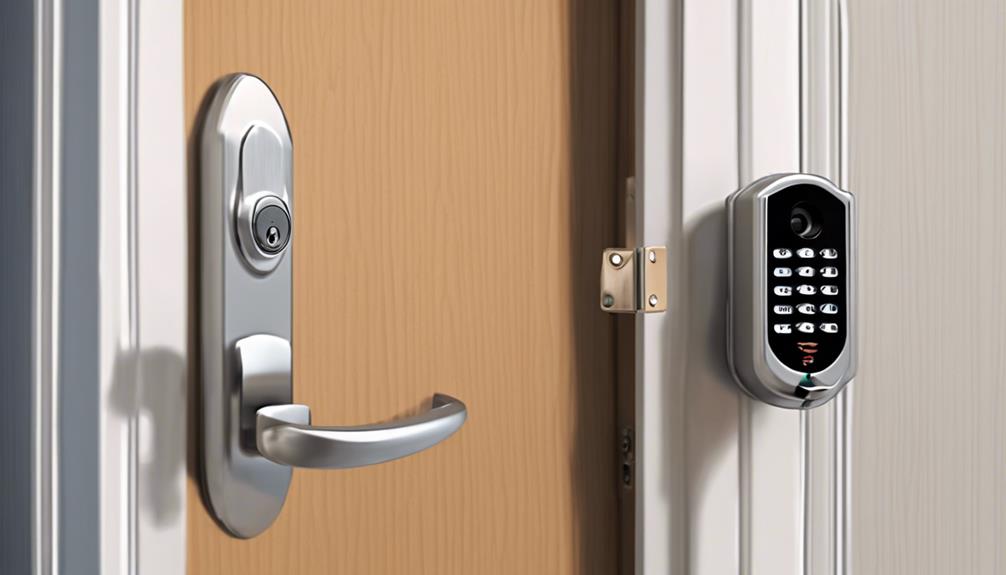
To safeguard your home effectively, consider upgrading to bump-proof or high-security locks. These resistant locks are like the superheroes of the lock world, keeping pesky bump keys at bay! Opting for uncommon lock brands might also throw off any wannabe intruders, as their sneaky bump keys won’t fit your unique lock setup. Don’t just stop there! Implement security systems, such as motion-sensing lights and CCTV surveillance, to spook those bump key bandits before they can even reach your door. Regularly inspect and maintain your locks; treat them like your car – a little TLC goes a long way in preventing unwanted guests. So, stay one step ahead and keep your locks in tip-top shape!
Consulting Professional Locksmiths
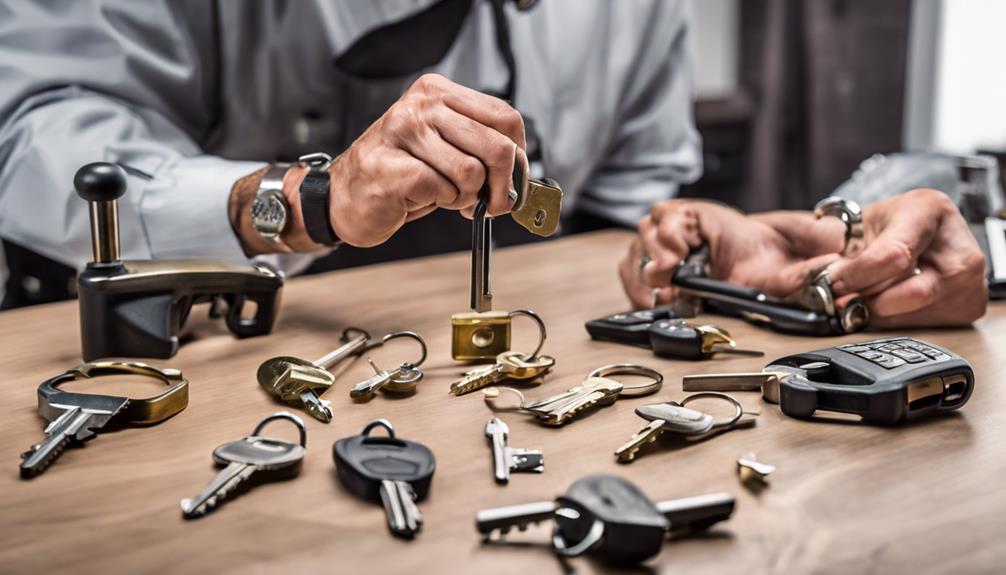
Consulting a professional locksmith is your best bet for installing and maintaining high-security locks that thwart bump key attacks. These wizards of locks aren’t just key jockeys; they’re your front-line defense in the battle against home invasions. By engaging professional locksmiths, you guarantee the proper installation and functionality of secure locks that keep bump keys at bay. They’re clued into the latest in lock technology and can spot vulnerabilities faster than a cat spots a laser pointer. Plus, establishing a relationship with a trusted locksmith means you’ve got an expert on speed dial for all your home security needs. They’re like the superheroes of home safety, but with more lock picks and fewer capes!
Frequently Asked Questions
Are Bump Keys Legal to Own?
Yes, you can legally own bump keys in most places. They’re mainly tools for locksmiths and for security testing. However, using them for illegal activities is a big no-no and could land you in hot water. It’s important to check the specific laws in your area before you get your hands on one. Remember, just because you can buy it online doesn’t mean it’s legal everywhere! Stay informed and stay legal.
Can Bump Keys Damage Locks Over Time?
Yes, bump keys can indeed damage locks over time. With each use, they may misalign or jam the internal pins, causing wear and tear that degrades the lock’s mechanism. This repeated stress can lead to malfunction, making the lock more vulnerable to future bumping attempts. To protect your locks, regular maintenance and inspection are key to detecting early signs of damage and ensuring the longevity of your security measures.
How Quickly Can a Lock Be Bumped Open?
If you’re wondering about your lock’s speed date with a bump key, here’s the scoop: it can be shockingly quick. With a skilled hand, that little piece of metal can whisper sweet nothings and open standard pin tumbler locks in mere seconds—often between 5 to 10. No signs of forced entry, just a quiet, efficient break-in. It’s like magic, only it’s the kind you really want to guard against.
Do Electronic Locks Resist Bump Key Attacks?
Yes, electronic locks do resist bump key attacks. Unlike traditional pin tumbler locks, which can be compromised with a bump key, electronic locks require digital codes or biometric verification for entry. This shift to keyless entry systems eliminates the mechanical vulnerabilities typical of conventional locks, greatly enhancing your security. So, you won’t have to worry about bump keys if you upgrade to an electronic locking system.
What Are Alternative Lock-Picking Methods to Bumping?
You’re diving into the world of lock security, and there’s more than one way to crack a lock without the original key! Besides bumping, you can pick locks using specialized tools to manipulate the mechanism, or try impressioning to create a key from a mold. Decoding is another method, figuring out the key’s pattern, and then there’s key duplication, where you replicate a key without needing the original. Stay secure!

